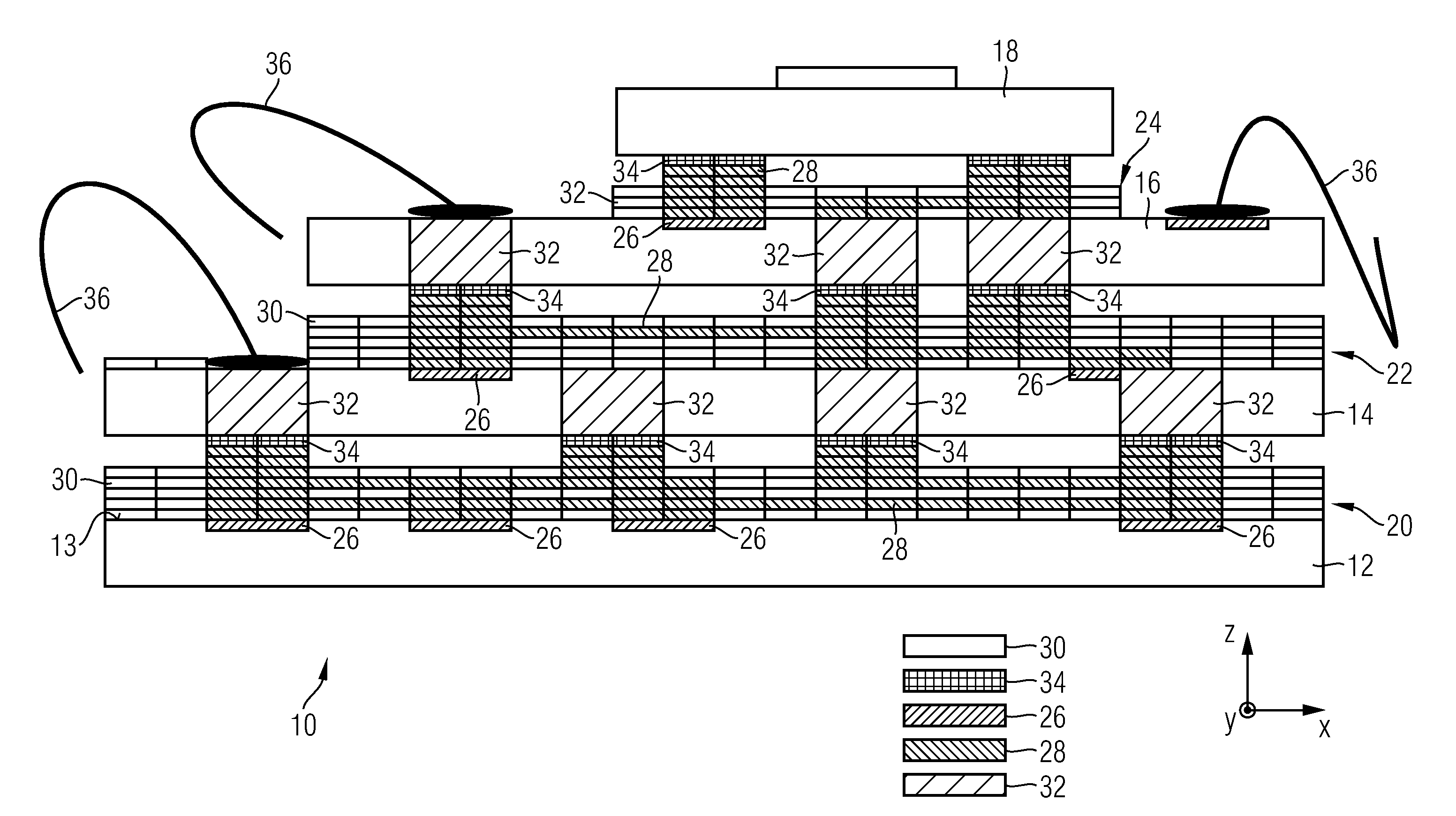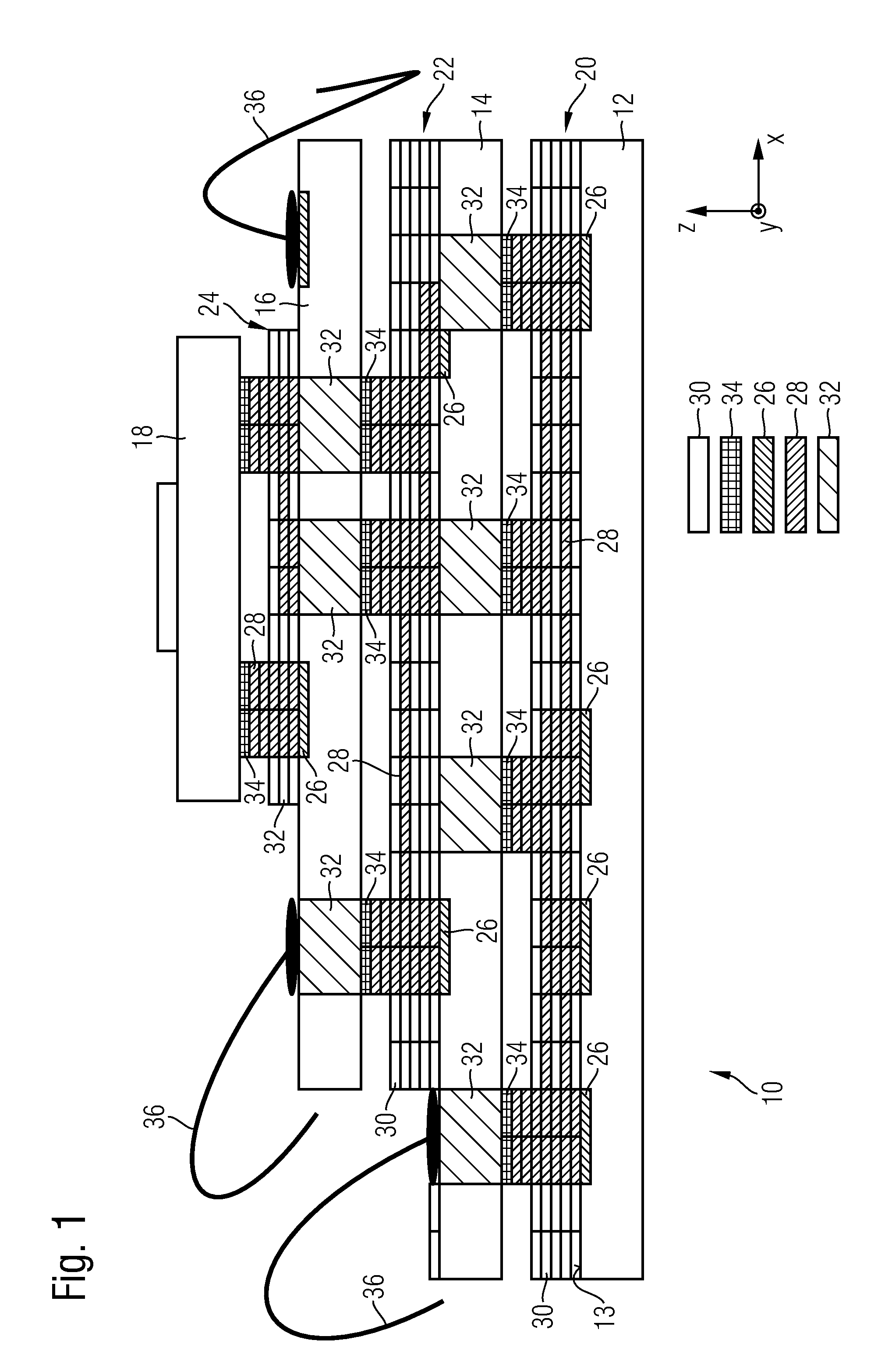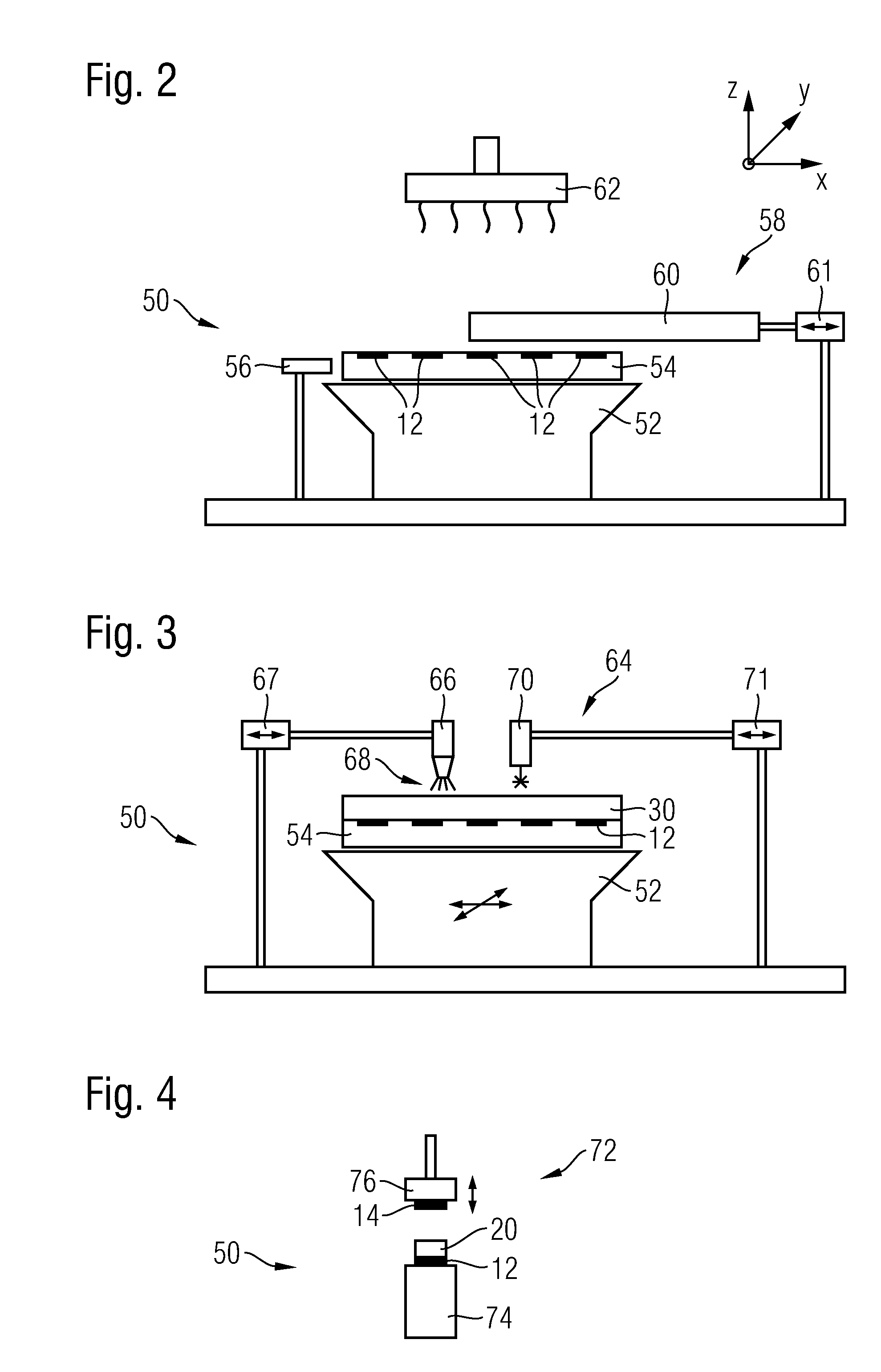Method and A System for Producing a Semi-Conductor Module
a semi-conductor module and semi-conductor technology, applied in the direction of individual semiconductor device testing, semiconductor/solid-state device testing/measurement, instruments, etc., can solve the problems of insufficient quantity of desired electric contact, easy error in bumping contact, complex wiring form, etc., to achieve rapid and economical changes or adaptations, and increase the cost of modules
- Summary
- Abstract
- Description
- Claims
- Application Information
AI Technical Summary
Benefits of technology
Problems solved by technology
Method used
Image
Examples
Embodiment Construction
[0051]In the exemplary embodiments described below elements which are similar to one another functionally or structurally are provided as far as possible with the same or similar reference numbers. Therefore, in order to understand the features of the individual elements of a specific exemplary embodiment, reference is made to the description of other exemplary embodiments or to the general description of the invention.
[0052]In order to facilitate the description of the projection exposure tool a Cartesian xyz coordinate system is specified in the drawings from which the respective relative position of the components shown in the figures is clear. In FIG. 1 the y direction runs perpendicular to the plane of the drawing and away from the latter, the x direction to the right, and the z direction upwards.
[0053]FIG. 1 shows a diagrammatic illustration of a semi-conductor module 10 according to the invention in a sectional view. This is a three-dimensionally integrated module in which a ...
PUM
 Login to View More
Login to View More Abstract
Description
Claims
Application Information
 Login to View More
Login to View More - R&D
- Intellectual Property
- Life Sciences
- Materials
- Tech Scout
- Unparalleled Data Quality
- Higher Quality Content
- 60% Fewer Hallucinations
Browse by: Latest US Patents, China's latest patents, Technical Efficacy Thesaurus, Application Domain, Technology Topic, Popular Technical Reports.
© 2025 PatSnap. All rights reserved.Legal|Privacy policy|Modern Slavery Act Transparency Statement|Sitemap|About US| Contact US: help@patsnap.com



